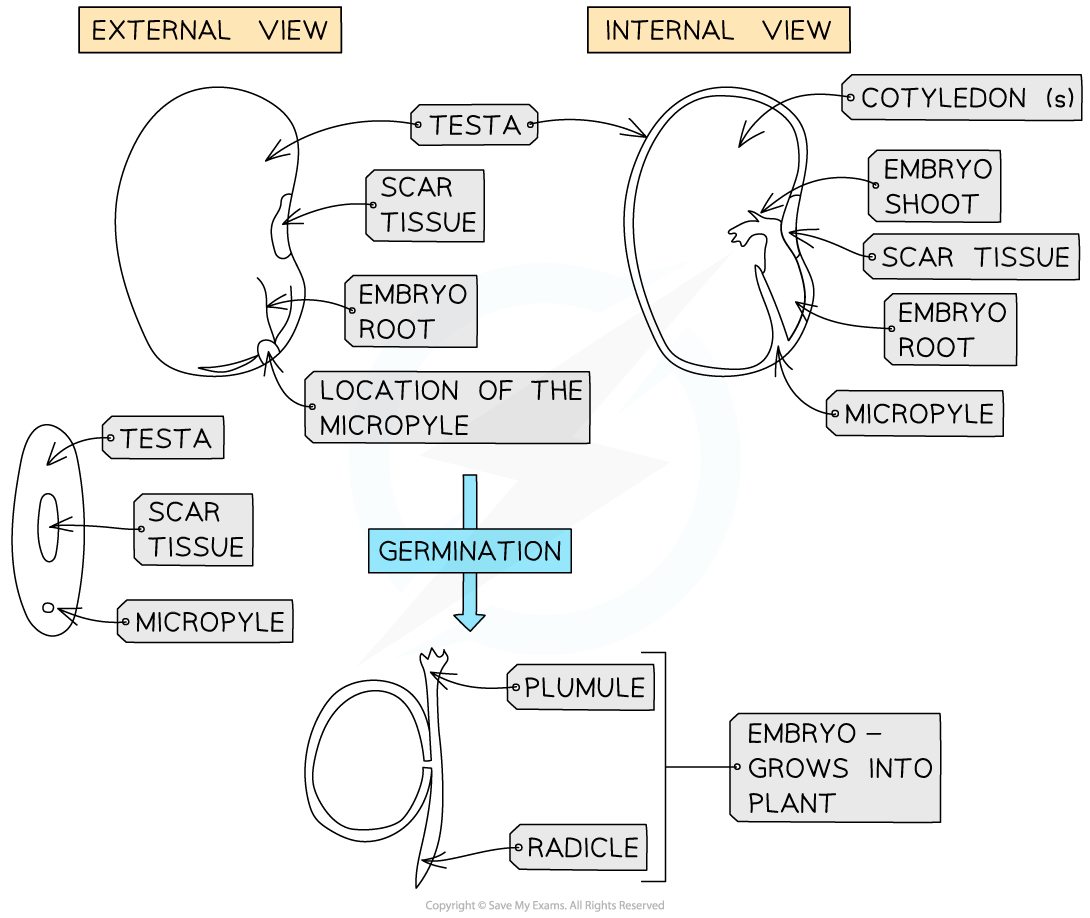Drawing the Internal Structure of Seeds
- A seed consists of several parts which can be shown in a labelled diagram
- Testa
- The seed coat
- Cotyledon or cotyledons
- The leaf or leaves of the embryo which sometimes contain the food source for the growing embryo
- Some plants have one cotyledon and are known as monocotyledonous, and some have two and are dicotyledonous
- In some plants the food source is separate from the cotyledons and is called the endosperm
- Embryo plant
- Consisting of the embryo root and embryo shoot
- Micropyle
- A hole through the testa found near the scar tissue where the seed was attached to the parent plant
- Testa

The internal and external structure of a bean seed
Drawing Animal-Pollinated Flowers
- Animal pollinated flowers have several features in common which should be included in a labelled diagram
- Nectary
- Nectar secreting glands to attract pollinators
- Petals
- Brightly coloured to attract pollinators
- Sepals
- Protect the unopened flower
- Stamen, which consists of
- The anthers which produce and release pollen
- The filaments which hold the anthers in position
- Carpel, which is made up of
- The stigma which receives the pollen
- The style which connects the stigma to the ovary
- Ovary which contains the ovules
- Ovules contain the female sex cells
- Nectary

Animal pollinated flowers have structures that attract pollinators and aid the process of pollination
